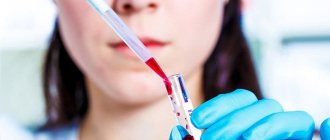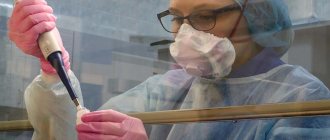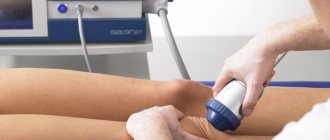Why women should visit a mammologist
About 50,000 cases of breast cancer are registered in Russia every year. Factors predisposing to the development of breast cancer include:
- complicated gynecological history: abortion, pelvic inflammatory disease,
- genetic predisposition,
- endocrine disorders: obesity, diabetes;
- chronic diseases: hypertension, atherosclerosis, kidney disease, liver disease;
- carcinogenic factors: living in environmentally unfavorable areas, smoking, working with toxic poisons.
The risk of breast cancer increases after age 35, but problems are possible at an earlier age. Women often experience problems with breastfeeding, encounter inflammatory processes, cysts, and benign neoplasms. A preventive visit to a mammologist is necessary in the same way as visits to a gynecologist.
Regular breast examinations detect pathologies in the early stages. Timely diagnosis is important for any disease, but especially for cancer. If the tumor has not affected the surrounding tissue, it is easy to cut out, and the appearance of metastases rapidly reduces the chances of recovery.
If there are no complaints, the visit to the mammologist is repeated once every 2 years. If suspicious symptoms appear, you should consult a doctor immediately.
For what symptoms should you contact a mammologist?
In addition to preventive examinations, there are situations when it is not recommended to postpone a visit to a specialist in this profile. They can be divided into two groups: alarming symptoms that may indicate the presence of diseases of the mammary glands, and risk factors that significantly increase the likelihood of the occurrence of certain diseases. The first include:
- Redness anywhere in the breast;
- Detection of a lump in the chest during self-examination;
- The presence of discomfort or pain in both the chest and armpits;
- The presence of any discharge not related to lactation;
- Enlargement or reduction in the size of one or both breasts;
- Bulging or recessed areola;
- Differences in the shape, structure, color of the mammary glands, noticeable externally.
The so-called risk group (patients for whom visiting a mammologist is recommended at least once every 6 months) consists of:
- Any diagnoses related to the genitourinary area (present or in history);
- History of complicated pregnancy;
- Trauma to one or both mammary glands, regardless of when it was suffered;
- Prolonged exposure to a stressful situation on a woman;
- Hereditary predisposition to cancer;
- Severe liver dysfunction.
Reasons for an urgent visit to a mammologist
Breast cancer stages 1 and 2 are often asymptomatic. A lump in the chest may not manifest itself for a long time. Therefore, women are recommended to conduct self-examination of the mammary glands after menstruation or before ovulation. You need to stand in front of the mirror and feel your chest. If a lump is detected, this is a reason to urgently visit a mammologist.
You should also see a doctor if you have the following symptoms:
- changes in the shape and size of the mammary glands, pronounced asymmetry, the appearance of edema;
- change in the shape and size of the nipples and areola;
- deformation of the chest, the appearance of dimples and depressions when raising the arms up;
- pain that occurs for no apparent reason and persists for a long time;
- pain associated with the approach of menstruation;
- bloody, purulent, serous, colostrum-like discharge from the nipples;
- changes in the skin of the mammary glands: the appearance of a lemon peel effect. increased density, ulcers, peeling, wrinkling;
- enlargement of axillary, supraclavicular, subclavian lymph nodes;
- swelling in the area of the mammary glands.
The listed symptoms are characteristic not only of malignant breast tumors. They can talk about an abscess, mastopathy, adenoma and other diseases. A visit to the doctor will allow you to establish an accurate diagnosis.

Breastfeeding women, in some cases, also require the help of a doctor. When is the best time to see a specialist without delay:
- symptoms of lactostasis and milk stagnation appeared;
- deep cracks appeared on the nipples;
- When feeding, the woman experiences severe pain.
Seeing a mammologist after completing lactation is a smart decision. The doctor examines the condition of the breast after breastfeeding.
The opinion that this doctor should be visited only after 40 years of age, and that young patients do not need him, is erroneous. Regardless of what age the symptoms appeared, you cannot delay. Breast cancer occurs in all age groups.
Days of the cycle for visiting a mammologist and self-examination
Optimal for young women are 7–9 days of the cycle, and for postmenopausal women this can be any day of the month - for example, every 15th. These days it is necessary to carry out self-diagnosis - examine the breasts for the presence of lumps. And in the same way, you should see a doctor on these dates.
If during your self-examination you find a lump that makes you suspicious, or a breast deformity, make an appointment with your doctor as soon as possible.
You can undergo an annual examination with a mammologist and gynecologist in the medical network in Moscow. Our doctors are highly qualified and are always ready to help patients regain and maintain their health. In our clinics you can undergo all the necessary tests, undergo ultrasound and mammography.
Take care of your health today to prevent the development of dangerous diseases in the future!
What day should you make an appointment?
The mammary glands are a hormone-dependent organ. The condition of the breast is directly affected by the period of the menstrual cycle. 1 – 2 weeks before the start of menstruation, progesterone levels increase. Progesterone prepares the body for conception and breastfeeding. In the last days of the cycle, the breasts may swell, enlarge, and become painful. Therefore, you should not go to a mammologist before your period - the results of the examination and examinations will not be informative enough.
The choice of the day to go for an appointment is determined by the length of the menstrual cycle:
- if the cycle is shorter than 25 days, you need to see a doctor on days 3–5;
- if the cycle lasts 28–30 days, go for examination on days 6–12;
- if the cycle is long and exceeds 35 days, ovulation occurs late, you can visit a specialist from 10 to 18 days.
If you have an irregular cycle, you should go for an appointment immediately after your period, when the bleeding stops.
In the question of when you need to go to a mammologist, there is a fundamental point - you need to be examined before the ovulation process begins, before progesterone rises. Due to the high level of estrogen, breast tissue is soft and painless.
If a woman has reached menopause, the question of which day of the cycle to go to the mammologist is not relevant. There is no menstruation, the ovaries do not function, estrogens are steadily reduced. Therefore, you can go to the doctor any day.
During breastfeeding, periods are often absent. Therefore, you can make an appointment with a doctor for breastfeeding on any day. If a nursing woman is menstruating, you need to focus on standard recommendations about the length of the cycle.
Ultrasound or mammography?
Some women doubt the reliability of ultrasound, while others are afraid of mammography because of the pain. However, both procedures are necessary. Both ultrasound and mammography are reliable enough for a doctor to make a diagnosis.
Before the age of 40, mammography is done in rare cases if a woman is suspected of having a growing cancerous tumor. In other cases, an ultrasound is sufficient - scanning the glandular tissue lobules.
With age, glandular tissue degenerates into adipose tissue, and then mammography becomes a more informative method of examination. But the decision on the necessary examination method is still made by the doctor.
How does an appointment with a mammologist work?
A mammologist studies and treats inflammatory, dyshormonal and tumor diseases of the mammary glands. He has a main specialty in one of three areas: gynecology, surgery, oncology.
Based on her cycle, a woman determines when it is best to go to a mammologist and makes an appointment for a consultation. During the initial visit, the doctor examines the patient’s medical history and determines the predisposition to breast cancer. He asks the following questions:
- what is the duration and regularity of the menstrual cycle;
- how many pregnancies, births and abortions there were;
- Do you have any chronic gynecological diseases?
- whether the woman is taking oral contraceptives or other hormonal medications;
- Are there any cases of breast cancer among relatives?
An examination by a mammologist includes mandatory palpation of the mammary glands and local lymph nodes in a standing and lying position. Palpation is carried out in several techniques: in a spiral, along radial lines, in upward and downward movements, in quadrants. If a specialist discovers a neoplasm, he describes in detail what it is: size, location, degree of pain, shape, consistency, degree of mobility. Since the breasts are relaxed in the first phase of the cycle, examination by a mammologist after menstruation is as painless as possible.

To get complete information about her health, a woman should undergo cancer screening. This is a complex of laboratory and instrumental examinations that make it possible to detect a malignant tumor at an early stage. As part of the cancer screening program, the doctor prescribes tests, ultrasound of the mammary glands and x-ray examination of the breast.
The following tests are required:
- general blood analysis;
- blood chemistry;
- blood test for hormone levels;
- analysis for mutations in the BRCA1, BRCA2 and CHEK2 genes.
An ultrasound examination allows you to assess the condition of local lymph nodes, and mammography shows the presence of tumors.
The examinations need to be completed quickly, so a visit to the mammologist should be planned on which day of the monthly cycle - preferably immediately after menstruation.
SYMPTOMS IN WHICH YOU SHOULD CONSULT A DOCTOR-MAMMOLOGIST
In addition to a preventive examination, doctors recommend immediately seeking advice from a mammologist if you have the following symptoms:
1. Presence of lumps in the mammary gland;
2. Enlargement or change in the shape of the mammary glands;
3. Chest pain;
4. Discharge from the nipples (especially dark in color - bloody, black, brown, dark green);
5. Seals after trauma to the mammary glands;
6. Enlarged lymph nodes under the arms;
7. Skin changes on the chest or nipple area.
INITIAL APPOINTMENT WITH A DOCTOR-MAMMOLOGIST
If the situation is not an emergency, then it is advisable to come to a scheduled appointment:
- On the 6th - 12th day of the cycle (the beginning of the cycle is considered the 1st day of menstruation). Individual calculation of the optimal time of appointment and examination is made depending on the duration of menstruation and the duration of the cycle: the optimal time for examination of the mammary glands is the period of time after the end of menstruation and before the start of the second phase of the cycle.
- You must bring the results of previous examinations with you to your appointment (specialist reports, results of ultrasound, mammography, cytology, etc.). It is advisable to take the mammograms themselves (films).
- If you have been examined and treated by an endocrinologist and/or gynecologist - endocrinologist, then it is also advisable to have these results on hand, since this information is important when studying the cause of breast disease and prescribing treatment in the future.
At your initial appointment at our Medical Center, the mammologist will ask you about your complaints, after which he will find out the history of the disease: when and how it all started, what preceded it and what could have caused the disease: all this is an important stage of the examination and often allows for a preliminary diagnosis and identify the cause of the disease.
Be prepared to answer questions:
- At what age did menstruation begin?
- How many days does the menstrual cycle last? (from the beginning of menstruation to the beginning of the next one).
- What day of your cycle is it today? (day of the last menstruation).
- Do you have premenstrual syndrome? (swelling and pain in the mammary glands before menstruation).
- Have you had any surgeries or serious injuries?
- Do you have any chronic diseases for which you are registered and undergo regular treatment, including at the moment? (which is most important).
- How many pregnancies and how many births have there been?
- Lactation? (how many months, if any).
- Cancer heredity: information about blood relatives of the 1st, 2nd, and 3rd degree of relationship is important.
- Allergy history (known allergies to medications).
This will be followed by an examination: be prepared to undress from top to waist. With a proper examination, the mammologist will conduct it in a standing and lying position, sometimes also on its side.
After collecting complaints, anamnesis and examination, Our Medical will draw up a plan for further examination, the full range of which you can undergo in the shortest possible time, in comfortable conditions and with modern equipment. Please note that in most cases the prescribed examinations are complementary and not mutually exclusive.
Dear Women! Our Medical Center has all the necessary modern equipment for diagnosing diseases of the mammary glands, which allows timely examination to identify any disease at an early stage. This applies not only to malignant pathology. There are a lot of diseases, often asymptomatic, which, in the absence of timely diagnosis and treatment, can lead to more serious pathology and, accordingly, to more difficult and expensive treatment, the results of which are not always successful.
HOW OFTEN DO YOU NEED TO HAVE A BREAST EXAMINATION?
It is important to conduct monthly self-examination of the mammary glands: there is a certain self-examination technique, during which the patient can reliably assess the condition of the mammary glands and lymph nodes; at the initial appointment, this technique is explained and demonstrated in detail.
You need to see a mammologist for an appointment and perform an ultrasound of the mammary glands at least once every 6 months. According to modern concepts, mammography abroad is prescribed to patients who have reached the age of 35 years, sometimes later (the issue is resolved individually, depending on complaints, examination results and previous examinations). According to modern Russian standards, mammography is first prescribed from the age of 39 (order No. 869n dated October 26, 2017).
In some cases, when, according to the results of the examinations, there is a tumor, pre-tumor pathology or a risk of developing a tumor pathology and/or hereditary factors are present, then mammography or ultrasound of the mammary glands is recommended to be performed more often, as prescribed by a mammologist. All these aspects are individually assessed in each specific case by Our Medical specialists.
Treatment of breast pathology.
Depending on the results of examinations, it can be conservative or surgical.
- Conservative treatment.
It is carried out for various forms of mastopathy, mammary cysts. In some cases, developing benign tumors and nodular forms of mastopathy are treated; with the prescription of modern medications for the treatment of mastopathy, it is possible to achieve the effect of their complete resorption. Treatment is divided into non-hormonal and hormonal.
1.1 Methods of non-hormonal therapy:
— recommendations on lifestyle, regimen and diet.
— prescription of medications for the treatment of various forms of mastopathy and prevention of cancer pathology (those are currently available, including domestic analogues).
- prescription of homeopathic remedies (less preferable, since the effect is weak and short-lived; there is no scientific basis for the effectiveness of treatment with these drugs).
- vitamin therapy.
- local therapy with special ointments.
- anti-stress therapy.
2.2 Hormonal therapy. It can be fully prescribed by a gynecologist or a gynecologist-endocrinologist after an individual examination and assessment of the hormonal and gynecological status; it is suitable and therefore not prescribed to everyone.
Dear women! Our Medical Clinic prescribes modern and effective treatment, in which you will forget for a long period of time what pain and discomfort in the mammary glands is, while at the same time preventing cancer pathology. You can also, in the shortest possible time, receive consultations from all the necessary related specialists who can be recommended to you according to your indications (gynecologist, endocrinologist, gynecologist-endocrinologist). All of them have extensive experience in these areas. Also in Our Medical you can undergo all the necessary additional examinations when prescribed by these specialists.
- Surgical treatment.
In some cases, surgery cannot be avoided. It is also important to do it efficiently and on time, so as not to allow the disease to become neglected, which will lead to more extensive and complex operations and an unpredictable course of the disease.
When do you need to urgently go to the gynecologist?
Indications for an immediate visit to the doctor:
- Pain and spasms in the lower abdomen with transition to the lumbosacral back.
- Vaginal bleeding.
- Sharp discomfort after sexual intercourse.
- Severe, intense itching in the vagina.
- The appearance of vaginal discharge of a purulent, curdled, bloody type.
- The formation of oblong erosions on the mucous part of the labia, which makes it painful to urinate and have sexual activity.
- Delay in menstruation by more than 2 weeks.
- The appearance of blood in the urine.
- Prolapse of the intrauterine device, regardless of the reason.
- The appearance of palpable tumors in the lower abdomen (to the right or left of the pubic symphysis).
- Problems with urination.
- The appearance of bloody clots from the vagina after a recent abortion.
- A sharp increase in body temperature after curettage of the uterine cavity.
- Painful periods, during which motor activity is impaired, dizziness occurs, and fainting may develop.
Against the background of these symptoms, an increase in body temperature, decreased appetite, nausea, insomnia, weakness, irritability, and decreased libido may be observed.
Also, the reason for urgent contact with a specialist is the appearance of contact bleeding - when vaginal bleeding occurs after intimate intimacy.
During pregnancy, all types of deterioration in health are an indication for an urgent call for an ambulance. The most dangerous signs are bleeding from the vagina, fainting, increased body temperature, sharp pain in the lower abdomen, and decreased blood pressure.











